Canon IXUS 220 HS Review
Canon IXUS 220 HS
Slim and well built for its class, this isn't a stand-out camera but one that's certainly worth considering.
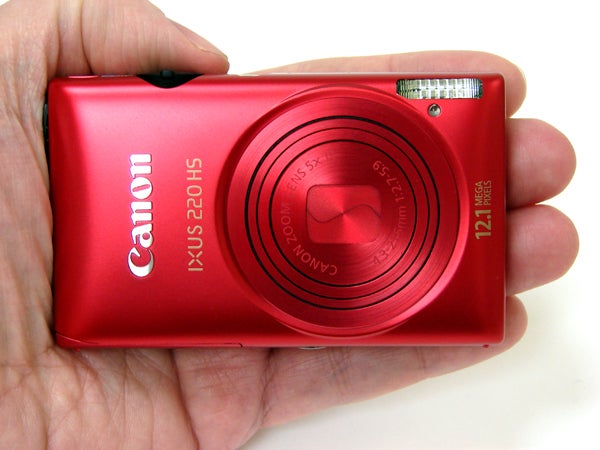
Verdict
Pros
- HDMI output
- Good low-light performance
- Suitable for camera beginners
Cons
- Average speed performance
- Some loss of sharpness at edges
Key Specifications
- Review Price: £170.00
- 12.1-megapixel sensor
- HDMI output
- Full-HD video capture
- Stainless steel body
- 5x optical zoom
In many ways the new Canon IXUS 220 HS is about as close to the definition of a standard point-and-shoot camera as you can get, but with high-end build quality and a thickness of a mere 19.3mm it still stands out from the crowd. Canon sent us a vivid scarlet review sample, against which the black top plate shutter release and power controls stand out very clearly. With large backplate buttons to match, it’s a very approachable camera for first-time users.
Not much wider or taller than a business card, the IXUS 220 HS is an easy fit for the trouser pocket or clutch bag. Like the IXUS 310 HS model we reviewed recently, this IXUS boasts a resolution of a modest 12.1 megapixels from a 1/2.3-inch CMOS sensor. Its low-light shooting credentials are suggested by the ‘HS’ suffix, standing for ‘high sensitivity’, delivered here by a back-lit sensor and Digic 4 image processor. It supplies 60% lower noise levels at high ISO speeds, according to Canon – a claim we’ll test in due course.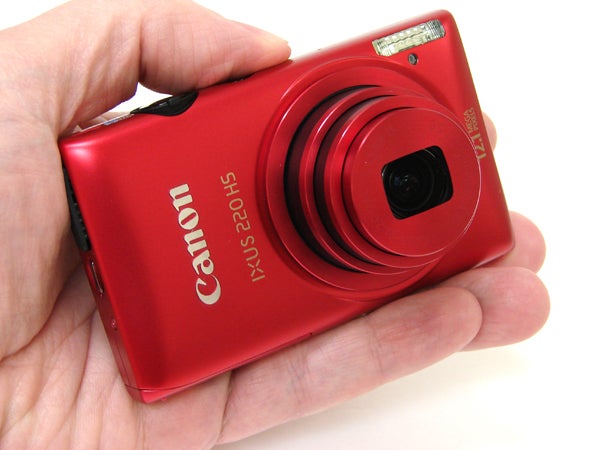
Under the IXUS 220 HS’s shiny casing lurks an optically image-stabilised 5x zoom, starting out at a usefully wide 24mm and running up to an equivalent 120mm at the telephoto end. Rather more of a surprise is that the camera captures full-HD video clips of 1920×1080 pixels at 24 frames per second with the benefit of stereo sound – the dual microphones are located on the top plate. We also get a dedicated video record button to the top-right of the back plate LCD. 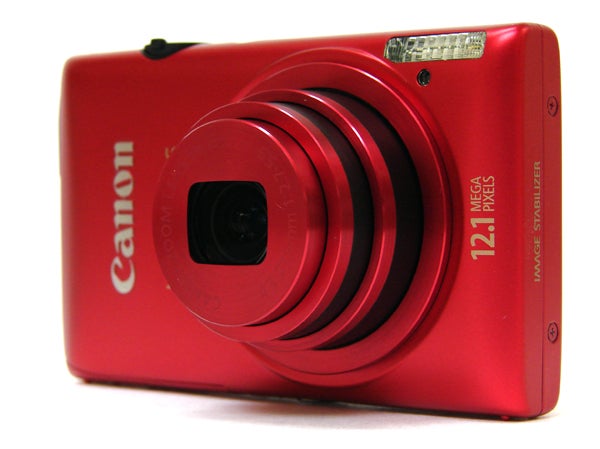
Press this and video clip recording commences no matter what mode the camera is currently set to. There’s no optical viewfinder, as we’ve come to expect of point-and-shoot compacts, and the screen is a modest 2.7in in size, offering a run-of-the-mill 230k dot resolution.
What do you get for your £170? Decent build, a dose of style and a better-than-average feature set, including HDMI output alongside standard AV/USB output.
The IXUS 220 HS’s stainless steel body lends the camera a sturdy yet lightweight feel, but there’s no hand grip here. Coupled with the camera’s smooth-as-a-pebble surface, this makes it hard to get a firm grip when shooting handheld. As a result, the rear LCD quickly becomes covered in fingerprints as you try and steady the IXUS with both hands instead – so you’ll be constantly rubbing the screen clean.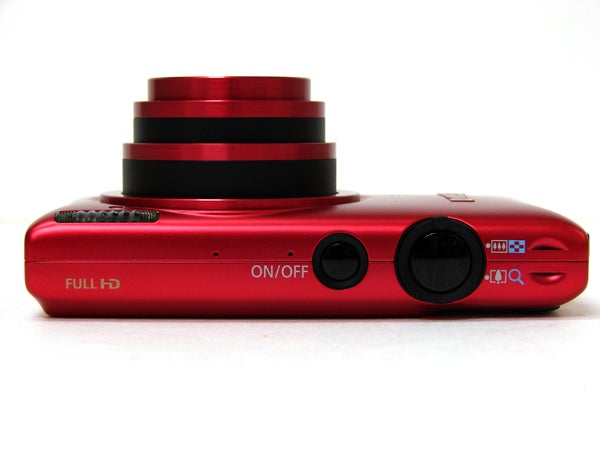
On the IXUS 220 HS’s back is a simple slider switch allowing you to alternate between standard Smart Auto mode, which uses face and subject detection technology to compare the scene to 32 on-board presets and selects the most fitting for optimal results, and Program Auto. The latter allows a greater degree of hands-on control – a press of the ‘func/set’ button to the right of the camera’s backplate providing access to a much wider range of manually selectable options. Manual control is welcomed, but this remains a camera for those who want to point and shoot and achieve respectable results with the minimum of fuss. Photo enthusiasts wanting a more feature-packed portable model should direct their gaze towards the Canon PowerShot S95 and G12 cameras.
The Canon IXUS 220 HS does offer a few advanced skills that will be of interest to casual snappers though. Among these is a high-speed burst shooting mode for action fans, which captures up to 8fps at a lower three megapixels. If you’d rather stick at full 12 megapixel resolution then speed drops to 3.4 fps.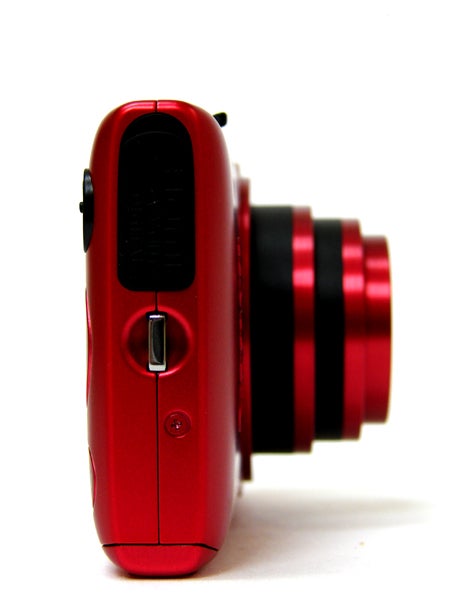
Speed also adds to creativity when filming video clips, thanks to the 240fps Slow Motion movie mode – although footage is shot at a low-quality 320×240 resolution. When played-back, it produces footage an eighth normal speed, giving that The Matrix-style bullet time effect. Higher-definition 640×480 pixel clips 120fps can also be captured. As in the new 310 HS model, there’s an esoteric Movie Digest mode on the camera too, which records a short video burst at the point a still image is taken and then automatically stitches these clips together to form a little movie to tell the backstory of your day.
This feature of the IXUS 220 HS may appeal to travel snappers wanting to record a bit more of their surroundings, but the camera doesn’t feature the latest must-haves of GPS, nor is it moisture resistant. However, Canon offers a couple of waterproof cases for the 220 HS, recommended pricing ranging between £55 and £225 (dearer than the camera itself!) dependent on which option you go for.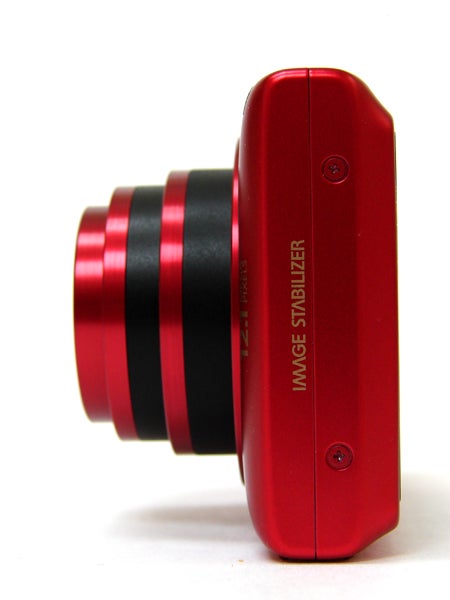
This IXUS 220 HS, like the rest of the Canon compact range, provides the ability to adjust colour tones via the function toolbar. Tucked away beyond the shooting modes, there’s also a range of digital effects that mirror those on its pricier 310 HS, taking inspiration from the ‘creative studio in a box’ Art Filters and Magic Filters of the Olympus Pen and Tough compacts.
There are the usual fisheye and pinhole camera style effects, plus a super vivid setting and monochrome for those who want to inject an artistic moodiness into shots. Our favourite was the miniature effect, which apes the result from a specialist tilt and shift lens, narrowing the portion of the image in-focus to give the illusion that you’re looking at a photograph of a model rather than an actual building, car or landscape. This can be applied to video clips as well as stills, at 1.5, three or six frames per second to provide a time-lapse movie style effect, further extending the camera’s creative uses.
The Canon IXUS 220 HS’s power switch is slightly recessed into the top plate to prevent accidental activation when handling the camera. Give this a press and with a sprightly chirp the camera almost instantly bursts into life, LCD switching on and lens defaulting to its maximum wide angle setting. The controls are well-labelled and larger than average for a camera of this size. The IXUS isn’t daunting for first-time users.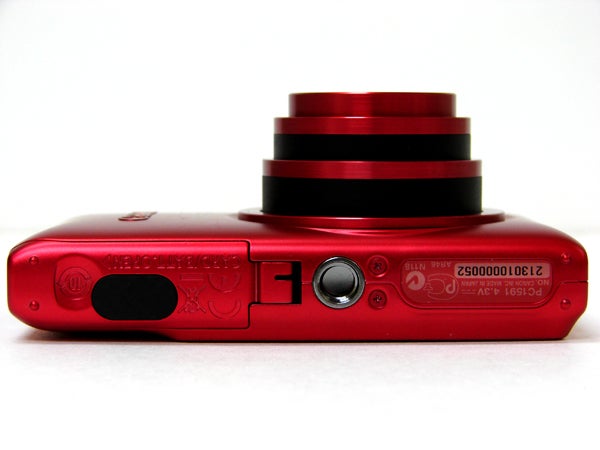
A thumb-operated slider switch swaps between Smart Auto and Program Auto capture – the latter mode providing a greater range of image tweaking options. With playback of captured snaps given its own dedicated button, a half-press of the shutter button will have you right back in shooting mode, without needing to mess around with any other dials or switches. In fact there’s no bottle top style shooting mode dial here at all – controls have been pared-down to the essentials to allow users to take and review shots quickly.
Ranged around the dial on the back are exposure compensation options (a modest /- 2EV), flash settings, display settings and focus adjustment between infinity and macro. If you’ve opted for the simpler Smart Auto instead, the focus point is decided by the camera. Pressing the exposure comp option calls up an AF tracking point instead, for those who want to maintain focus on a particular subject – for example children or pets who won’t stay still.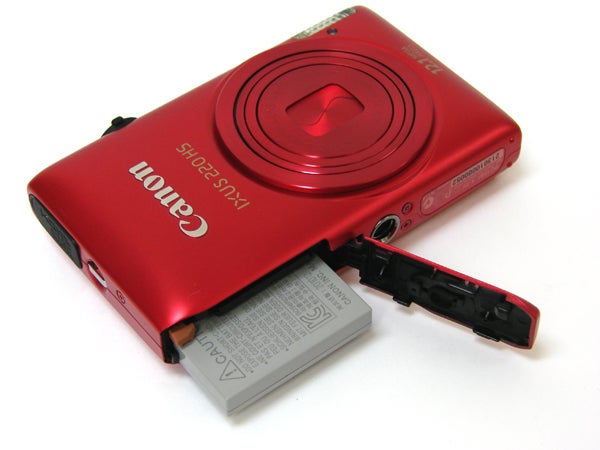
A press of the ‘func/set’ button in Smart Auto mode brings up a toolbar on the left side of the screen with a very limited array of options: self timer, the ability to control image aspect ratio, plus a choice of JPEG image size (Large, two Medium options, Small) and compression level (Fine or Normal) depending on how many shots you want to squeeze on to your SD, SDHC or SXHC memory card – there’s no internal memory supplied with the camera.
Flick the switch to Program mode instead and a press of the function button opens-up a rather more extensive array of options. Metering can be controlled, with the choice of flitting between evaluative, centre weighted average and spot, and it’s here we get access to the ‘My colors’ colour tone options. You can leave this set to ‘off’ whereby the camera deploys its factory presets for naturalistic results. Or alternatively you can select vivid, neutral, sepia, black and white, our favourite ‘positive film’, darker skin one, and bias individual red, green or blue colours in the frame. There’s also a further custom colour option. White balance and ISO speeds can also be adjusted, with options ranging from ISO100 up to the maximum ISO3200 setting. An auto setting is also on-hand.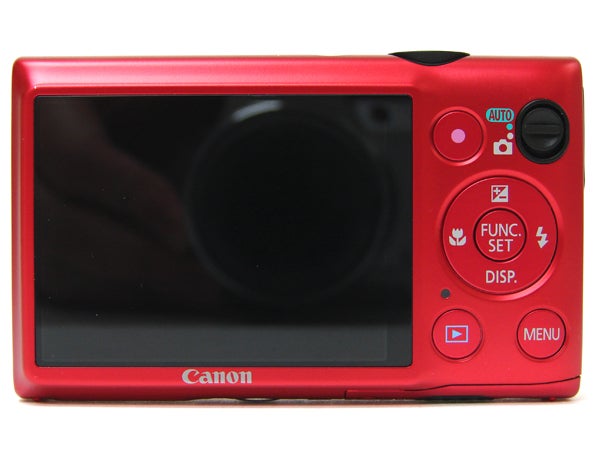
The rest of the shooting modes are hidden within this same toolbar, including Movie Digest mode, dedicated portrait and “kids and pets” scene options, smile shutter, high speed burst shooting, best image selection (the camera choosing the best representation of a given scene from a sequence of shots), handheld night scene, Low Light (three megapixel resolution), plus fisheye, miniature effect, toy camera, monochrome, super vivid and poster effect. The slow motion movie clip option is also squeezed into this long list of possibilities.
While the autofocus is not lightning fast, it’s fast enough for this class of camera. Press down fully to take the shot and in single shot mode the camera takes around three to four seconds to write a maximum resolution JPEG to memory. Again, not the fastest ever but neither is it something you notice holding you up as you progress from one shot to the next.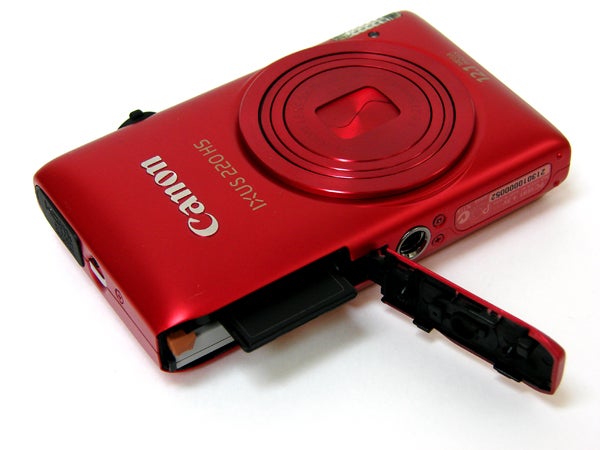
We were very pleased with the image quality of the IXUS 220 HS. Sure, like any compact camera it has its issues with pixel fringing and loss of sharpness towards the corners of the frame heightened by that wider than average 24mm equivalent wide angle setting. But most of us will be looking dead centre at our subject, which is generally well-exposed and crisp. The camera obviously functions at its best in good daylight conditions, so is an ideal sea and sun holiday companion in that respect. However, its performance in lower lighting impressed us too, with its top ISO3200 actually being usable rather than just there to bump-up the spec list. It’s a better-than-expected result from this relatively low cost Canon IXUS.
Verdict
The Canon IXUS 220 HS continues Canon’s run of sleek, attractive pocket models and at under £200 it’s not going to break the bank. That may sound like feint praise, and indeed it is – there’s little here that we haven’t witnessed before from the range. That in itself doesn’t of course make the IXUS 220 HS a bad camera, it’s just not an especially exciting one.
It does, however, stand out from the crowd by virtue of its noise-free results at higher ISO settings, Full-HD video, HDMI output, and fun digital effects filters. It may lack the 3D mode found on Panasonic Lumix and Sony Cyber-shot models for £100 more, but in truth most of what anyone would require from a snapshot pocket camera these days is present and correct. It’s not revolutionary in any particular way, but the Canon IXUS 220 HS is a competent, consistent performer.
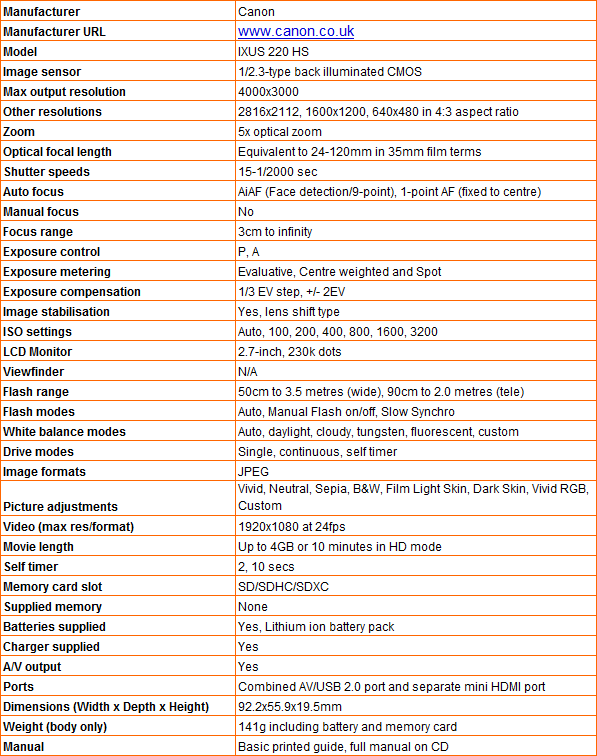
A selection of images taken at the camera’s incremental light sensitivity settings, using only available daylight. The IXUS 220 HS ISO range is relatively modest and straightforward, starting out at ISO100 and working its way up to ISO3200, though Canon does throw in an additional Low Light shooting mode for fully auto snapping, the caveat being that resolution falls then falls to three megapixels. Let’s see how well the Canon copes…
—-
—-
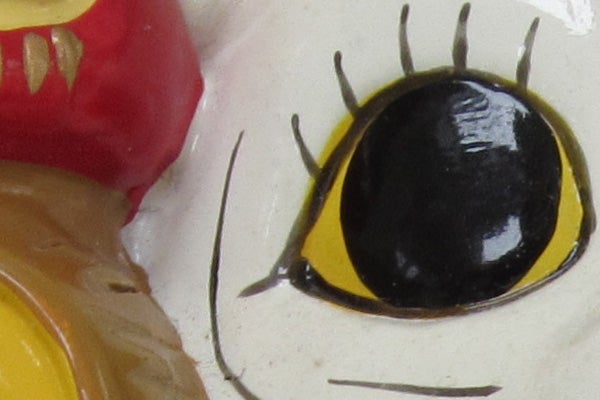
With the camera’s Auto ISO setting choosing the lowest manually selectable option of ISO100, as expected detail is good, the shot is crisp overall and there’s no noise to report in shadow areas; pretty much as expected then.
—-
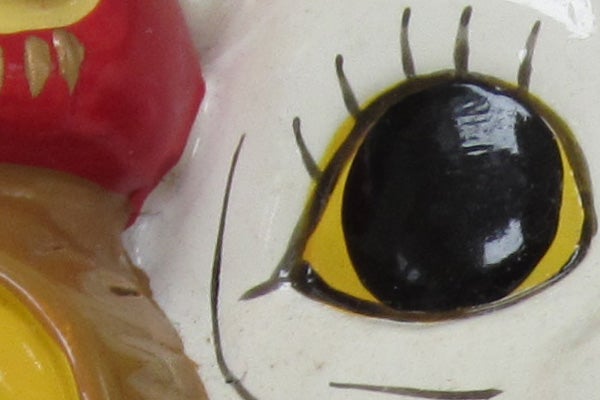
Same lack of noise to report at ISO200, if we’ve lost a tiny bit of contrast over ISO100.
—-
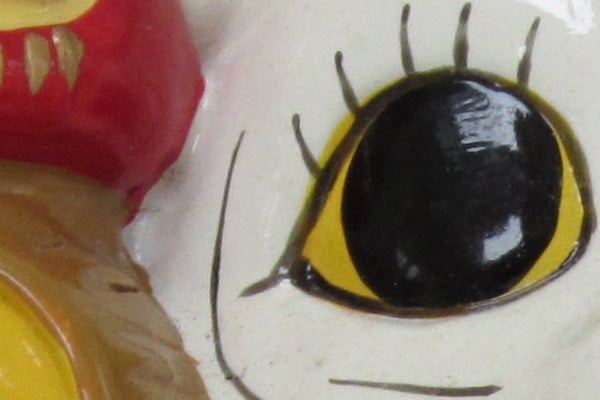
We’re at ISO400, usually the setting at which noise begins to creep in on cheaper compacts. But again here even when zooming in close on detail we’re hard pressed to witness any degradation in the image from the Canon.
—-
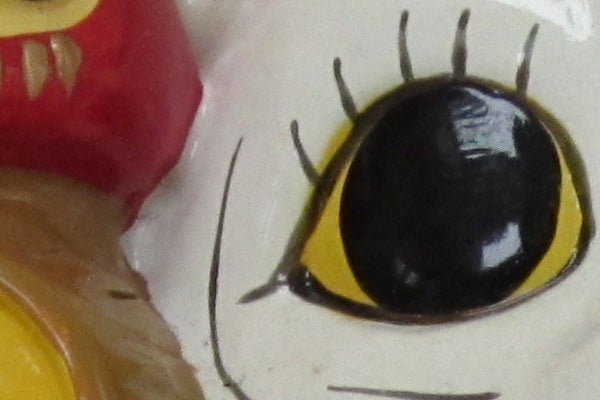
The same test subject at ISO800, and overall the image is still fairly clean if we’re slightly losing edge definition on close inspection.
—-
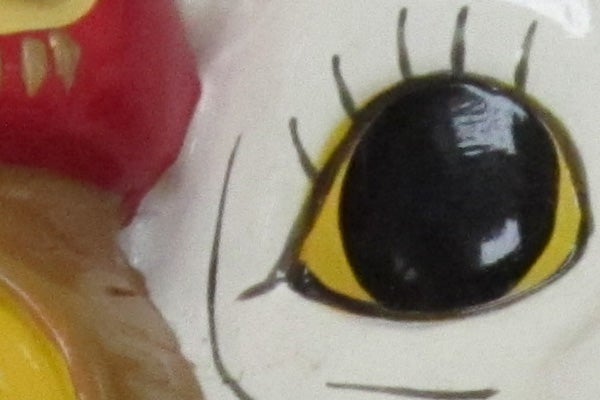
Slightly softer again when it comes to detail examining our test image at ISO1600. But again most would be hard pressed to spot any deterioration when viewing the full frame.
—-
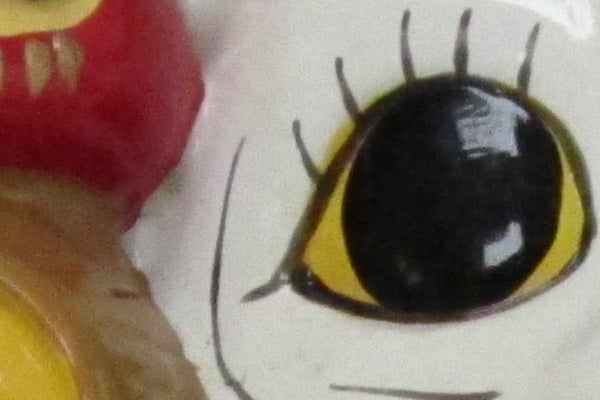
More soft at ISO3200 but not a pronounced jump in terms of noise over ISO1600. Overall the Canon 220 HS has performed very respectably in this task, giving an identical showing to the marginally pricier 310 HS which boasts the exact same ISO range.
—-
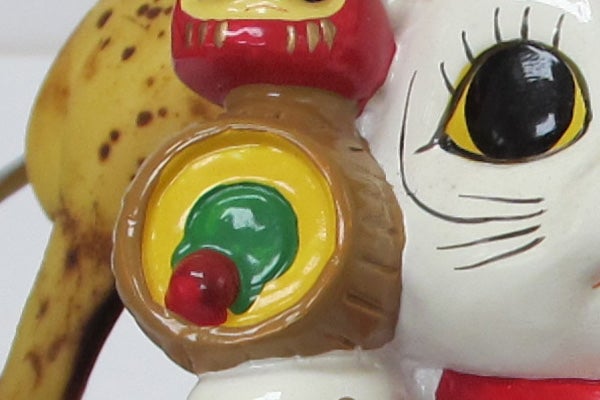
…And so we’ve tried shooting our test image with Low Light mode selected, which effects an image drop to three megapixels. Here the camera has itself chosen a setting which equates to ISO400, so again, no apparent noise.
—-
A more general selection of test shots are revealed on this page and next to act as an evaluation of the IXUS 220 HS in a variety of shooting conditions.
—-

This unadulterated wide angle shot at 24mm equivalent setting and straight from the 220 HS reveals a good grasp of detail centre of the frame, getting progressively softer toward the corners. Some quite alarming pixel fringing is noticeable top left of frame on the upper tree branches, even without the need for close inspection.
—-

By contrast a handheld maximum 120mm equivalent telephoto setting shot from the same vantage point. Detail is noticeably softer centre of frame and could do with contrast being tweaked to add some missing definition, but on the whole not at all a bad result from a pocket point and shooter.
—-
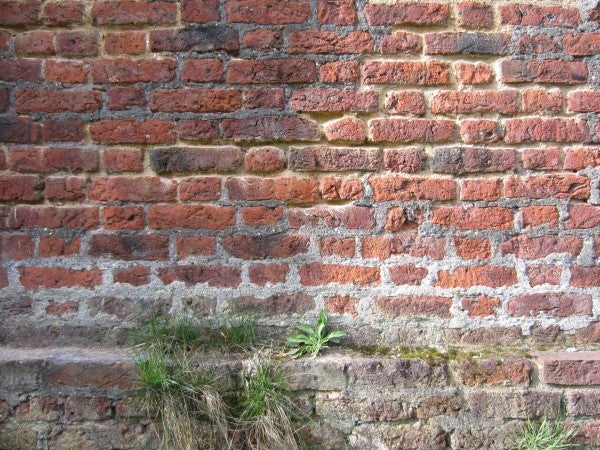
Another maximum wide angle shot of a closer subject with plenty of inherent detail which will give a better impression of the crispness captured in the 220 HS’ 12 megapixel shots. We’re not seeing obvious barrel distortion at this range, but corner detail is again softening.
—-

Our rusty gate shot reveals more detail than we might expect from a humble 12 megapixel snapper with a physically smaller lens.
—-
Here are some general test shots taken with the IXUS 220 HS to give an idea of performance ability when it comes to image quality, dynamic range, colour rendition and focal range.
—-

Lovely natural colours from the Canon in this extreme close up shot; those who do purely want to point and shoot and get decent results without spending a lot up from could do far worse than consider the Canon IXUS 220 HS.
—-
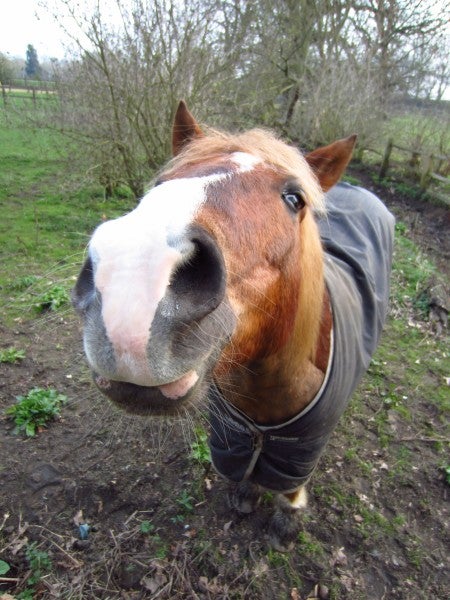
No we haven’t deployed the fish eye digital effect here; the illusion is merely due to the subject’s proximity to the lens at the 220 HS’ maximum 24mm equivalent wide angle setting.
—-

Again, when faced with plenty of colour in the frame the Canon comes up trumps in this wide angle snap. Yes, the buildings do appear to be leaning slightly, but we were shooting from a low-ish vantage point.
—-

By contrast a shot taken handheld towards the telephoto end of the zoom; again natural colours and a decent level of detail.
—-
Trusted Score
Score in detail
-
Value 9
-
Image Quality 8
Features
| Camera type | Digital SLR, Digital Compact |
| Megapixels (Megapixel) | Megapixel |
| Optical Zoom (Times) | 12 Xx, 5 Xx |
| Image Sensor | CMOS |
| Image Stabilisation | Optical |
| LCD Monitor | 3 in, 2.7 in |
| Flash modes | Auto Flash, Flash OFF, Flash ON, Red-eye Reduction, Slow Sync, Flash Exposure Compensation |
| Video (max res/format) | 640 x 480, 1920 x 1080 |

